MAY DAY(S)
“Generations have trod, have trod;
And all is seared with trade; bleared, smeared with toil;
And wears man’s smudge and shares man’s smell; the soil
Is bare now, nor foot can feel, being shod.”(1)
These words by G. M Hopkins were written between 1876 and 1889. Perhaps he had been dipping into his Wordsworth collection and taken his words to heart before writing.
“The world is too much with us; late and soon,
Getting and spending, we lay waste our powers:
Little we see in Nature that is ours;
We have given our hearts away, a sordid boon!(2)
If they thought things were bad back then what would they have made of things today. Here in 2019 a global laying to waste of the planet is the conclusion, the common thread, of all contemporary observers of the natural world. Hence a ‘may day’ call has gone out, an S.O.S, to save the planet, to save humankind from itself. We need hope to sustain the fight. In his poem, Hopkins offers this thought to help. It is the first line following on from his verse above:
“for all this nature is never spent”
Its inherent powers of procreation, of colonisation, can lead to re-birth and generate renewal. The task is to give it a chance. That as John Lennon sang “is all we are saying”.(3) But it needs saying loud and clear.
My own May days encounters with birds have given me some encouragement as to how things could evolve. After all as Emily Dickinson wrote:
“Hope is the thing with feathers”(4)
So just what moments occurred over the month to warrant my faith in her words? Lets take it day by day.
May 6th. A cycle ride over to Hownam and Dere Street brought an unexpected and rare sight. A flash of orange across the road in front of me; the signature sign of a female ‘firetail’. Redstarts had arrived from afar on cue.
May 7th. A cool calm day provided the perfect conditions for a paddle in my inflateable canoe around Yetholm loch. Becalmed amongst the reeds at the far, ‘moss’ end, I lay back and let the summer sights and sounds unfold. A reed warbler chattered away, twenty five swans sailed leisurely by, gulls circled lazily overhead and much higher something else! Was I kidding myself? Yet the size , shape and colouring provided a strong hint that it was an Osprey. If so it too was arriving after its migratory journey. Slowly, in measured flight it passed over me, high above Venchen hill and onward out of sight. There are sightings of Ospreys in the Borders and down at Kielder so a reasonably positive I.D. (say 60-40). Anyway the point is that the fact I could even consider the bird to be an Osprey tells the main story. Back in the 1960’s their only UK presence was in a highly protected RSPB reserve at Loch Garten. From that starting point the Osprey has been given a chance to re establish its presence with us and has taken it.
May 8th
Today was to be my first session as a volunteer warden on Lindisfarne for Natural England. Their three month long shore bird monitoring and protection initiative requires intense supervision of the nesting sites of terns, ringed plovers and oystercatchers. The early morning omens were poor when I set off. Recent warm weather had given way to a wet and wild combination. It was freezing as I made my way to the look out cabin. There I met my three colleagues who were peering out over a haar enveloped beach. Above the barely visible fenced off protected zone, seven Little Terns bravely rode the wind, newly arrived from the Somali coast and the Seychelles. Any shock to their tiny nine inch frames was hidden by their animated kirri, kirri, kirri calls. Welcome to Northumberland!
May 12th. At home in the garden and round and about other encouraging, albeit less dramatic signs were in evidence. A second ‘firetail’ moment occurred; this time along my local lane above the pond. A male redstart flashed its tail in full view. Our wild garden too was full of colour and action. A male bullfinch feasted on dandelion seeds, starlings fed their noisy offspring in two nestboxes, blue tits too tended theirs and a dunnock nestled on four sky blue eggs. All scattered in a bit of a kerfuffle as a Sparrow hawk hurtled through. Well it is a wild garden after all! Let’s not forget back in the 1960’s this bird was almost extinct.
May 13th. A long cycle ride to Ford Moss was to be today’s adventure. The timing was good as the leaf cover was still only just emerging so whitethroats and blackcaps could be both seen and heard. Surprise airborne moments occurred throughout the ride. Despite the oilseed rape monoculture and pungent smell of pesticide/herbicide spray, the hawthorn hedges and roadside ‘jack in the hedge’ verges were alive with Orange Tip butterflies. Over thirty miles I counted twenty five. Think what might flourish give more similar spaces.
May 17th Yet another Redstart. On this occasion spotted below Garddfadu farm beside the Afon Gwydderig near Llandovery. Just as it flashed its rump in flight a call was heard from the woodlands; a cuckoo. A rare sound now but present, still hanging on in this mid Wales haven in the hope of better times. We had been staying with relatives before moving on to St David’s. On the way there we stopped off at Laugharne. For a long time Dylan Thomas has been one of our favourite poets so the chance to visit his home overlooking the Twyi estuary was not to be missed. For me my introduction to Thomas occurred during a school assembly back in 1966. Our headmaster Arthur Nockels recited Fern Hill to the packed hall. Quite an audacious move it seems now. Anyway, thankfully the performance and words stayed with me. Here are the opening lines;
“Now as I was young and easy under the apple boughs
About the lilting house and happy as the grass was green
The night above the dingle starry
Time let me hail and climb
Golden in the heyday of his eyes.”(5)
Thomas did much of his writing in a shed just below his Boathouse home and looking through its front door and out over the estuary one could imagine the inspiration he drew from the locality. His own wry words recorded in a framed letter on display in the Boathouse spell out his affection..
“Having lived there for fifteen years…I am hardly ever stoned in the streets any more and can claim to be able to call several of the inhabitants, and a few of the herons, by their christian names……..Now some people live in Laugharne and saw no good reason to move…..And some like myself, just came one day, for the day, and never left; got off the bus and forgot to get back on again.”
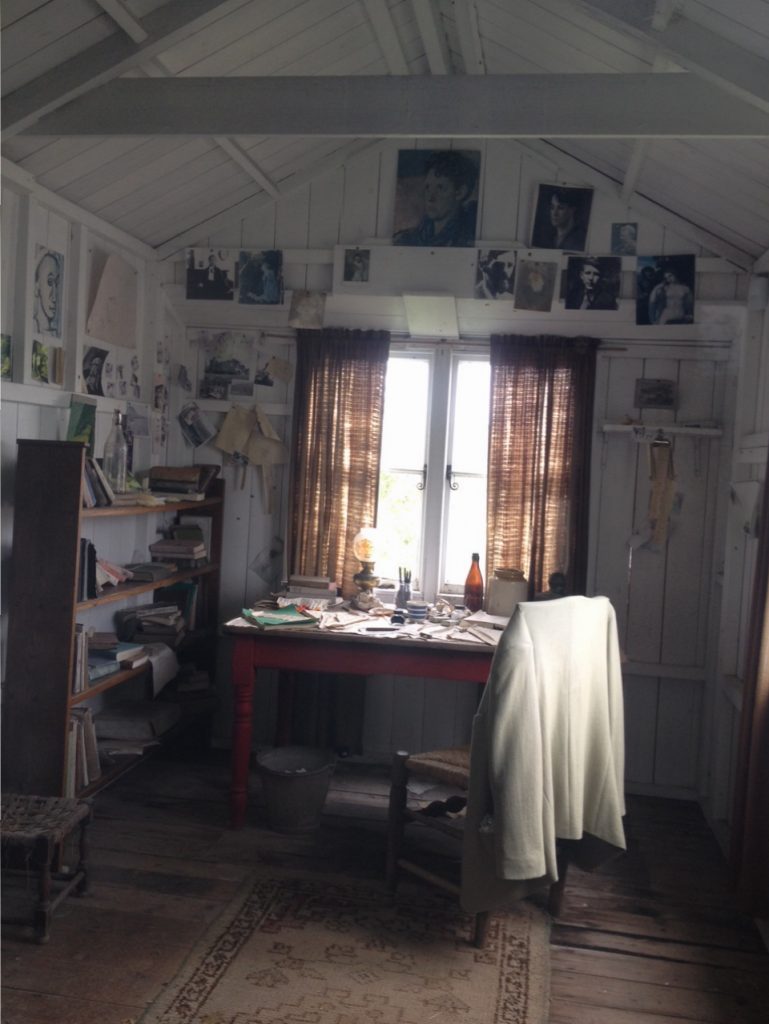
We spotted a descendent of that heron as we walked along the shore. Perhaps it was called Dylan!
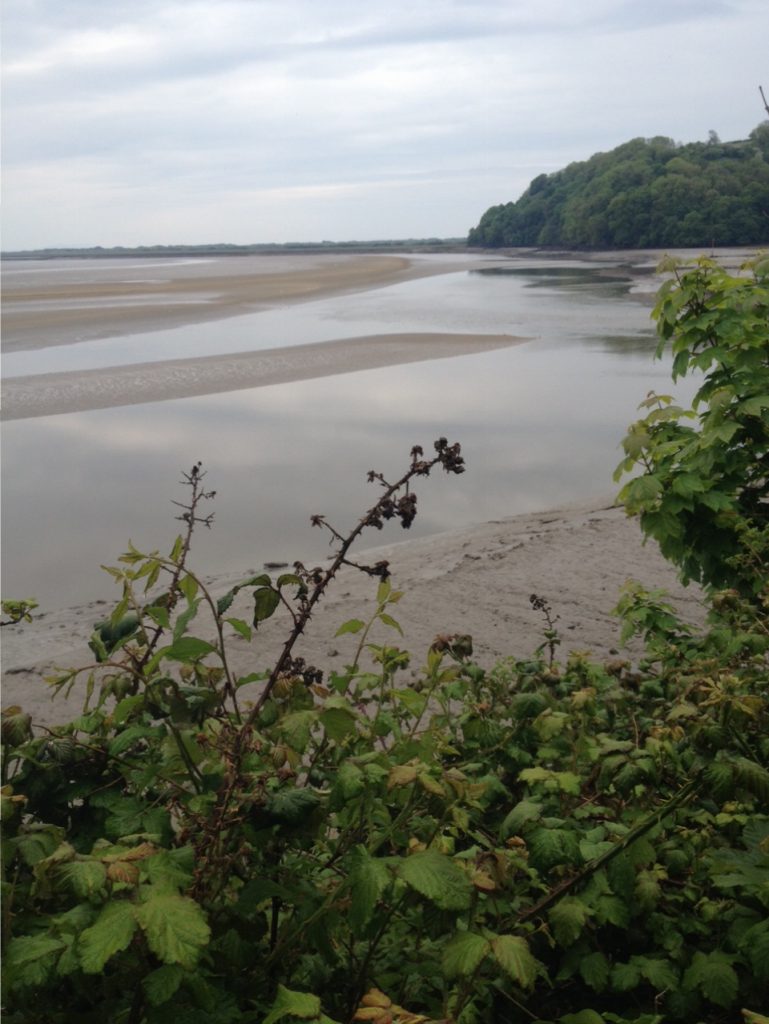
“Time had let me hail and climb” in Thomas’s footsteps and it proved to be an auspicious ‘golden’ moment! Over the next two days we walked long stretches of the Pembrokeshire coastal path in glorious warm, bright weather. Bluebells, campion and thrift carpeted the clifftops, gorse shone while wheatears and stonechats flitted in and about it. Above it all a red kite effortlessly glided yet another indication of what can flourish if given the chance. Back in 1969 I observed a pair clinging to survival in nearby Tregaron. Now it is a common place marvel. And yet there was more to come. My old Coward birdbook from 1920 (6) has this to say about a bird associated with this cliff top habitat. “It is a species going under.” And yet during our ten mile walk to Porthvain we were privileged to see eleven choughs cavorting over the clifftops or leisurely sunning themselves on sheltered ledges. The bright light picked out their curved red beaks and red legs, another optimistic ornithological treat.
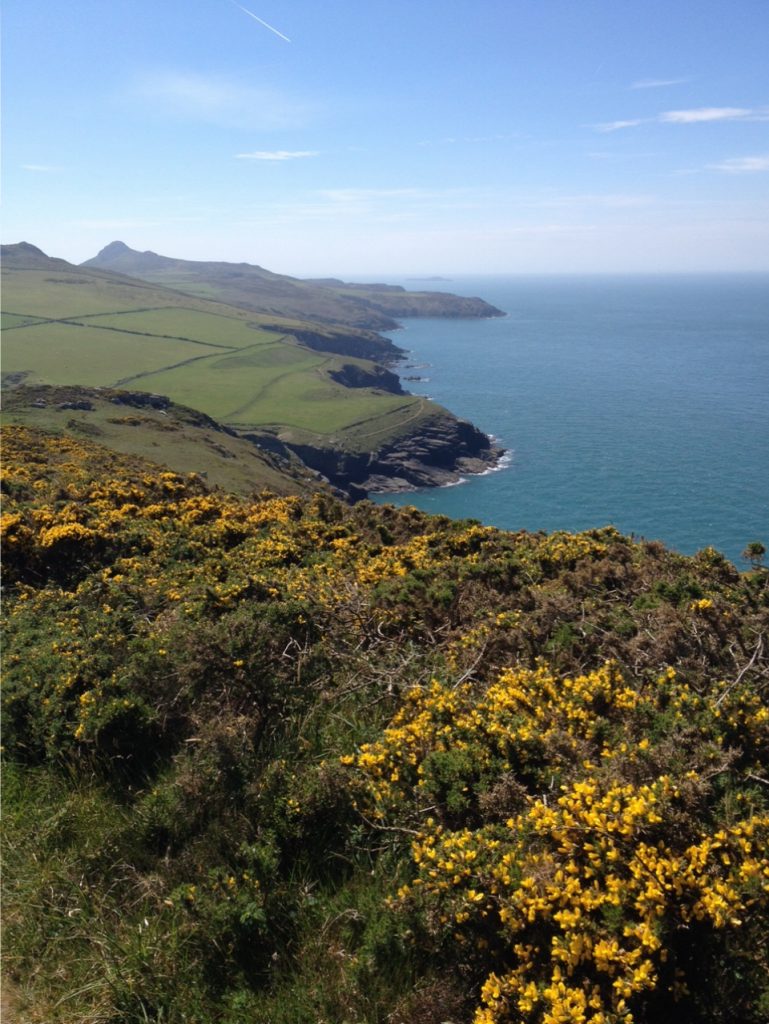
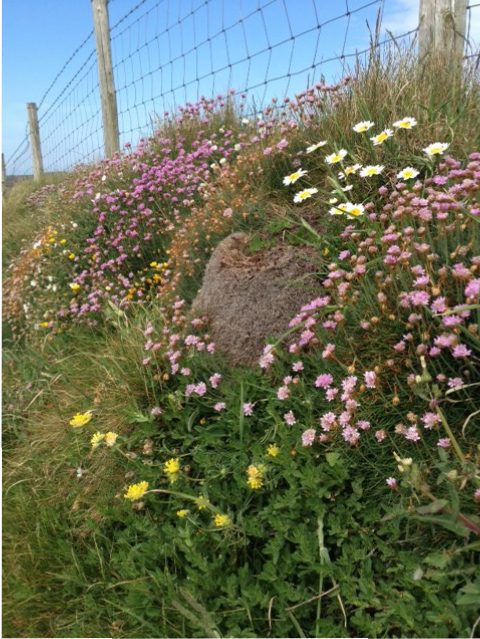
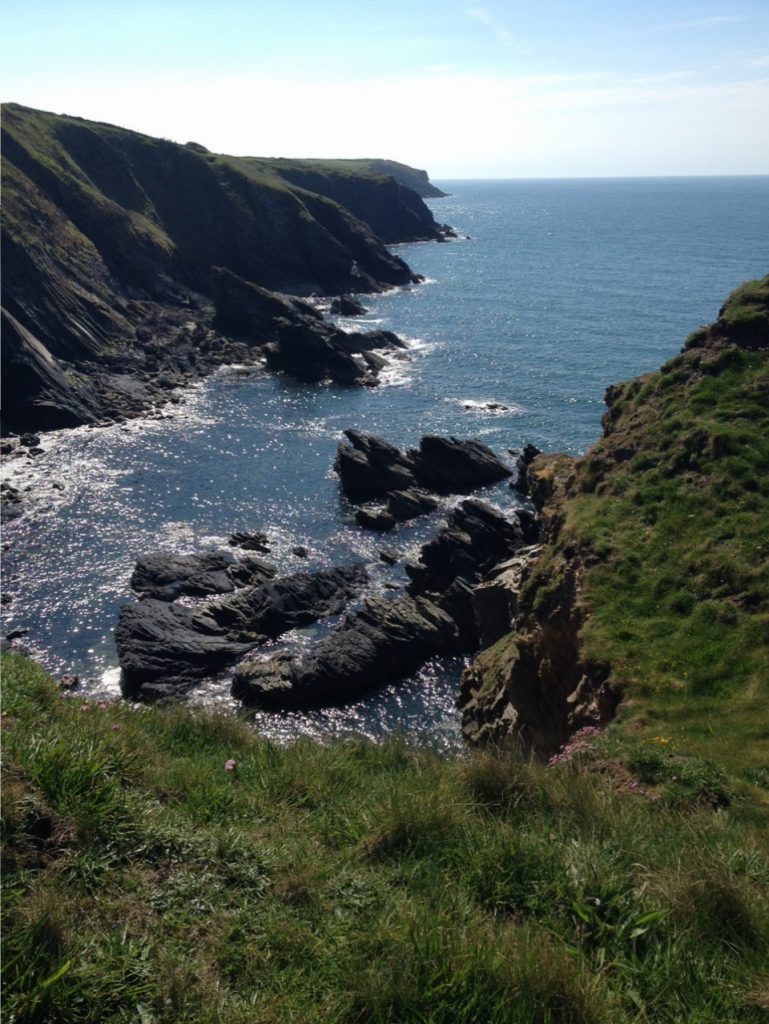
May 24th. Today I was over at Lindisfarne resuming my volunteer wardening duties . A lot had changed. Thirty three pairs of LittleTerns were now in residence within the protected nesting area. What a delightful sight they are when airborn; a flicker and flutter of grey and white. There was another ornithological treat that day. On my walk to the site a skylark flew up from a tussock on the dunes prompting a closer look. Four nut brown speckled eggs were tucked away in a perfect nest. The omens weren’t so good at the start of my next visit on the 29th, Andy the warden, declared there to be an ‘incident, not marauding dog walkers, but a young deer tangled in the security fence. I manned the lookout while he and fellow volunteer ,Gav, skilfully coordinated its release so that peace was restored to the colony. Moreover with each passing week, the colony flourishes. Just one week later the detailed nest site (or scrape) count had revealed fifty sitting birds. On this day they were joined by a couple of Arctic Terns newly arrived after their epic migration from the Weddell Sea, off Antarctica. Offering a safe haven here in Northumberland for them and their cousins is the very least we can do. For Mary Anne Clarke they journey north and south each year on a wing and a prayer:
“Tell the air to hold me in the rushing heart of it
And keep its paths straight
Away from home let there be a land that
Flows with fish and flies
And let it taste like it tasted at home.”(7)
If indeed “hope is a thing with feathers” then terns embody that hope. They overcome every peril in order to embellish our world. That world, their world, our world, is under severe threat. The May Day call has gone out from many quarters. My May Days have for me shown that there is still time to counter that threat. These little anecdotes show that Mother Nature is hanging on, “is never spent” and has exhibited its innate capacity to survive and occasionally thrive. Renaissance is up to us. We need to do all we can to let the healing begin.
References.
- Hopkins. G.M. Gods Grandeur. from Penguin Poets. 1953.
- Wordsworth.W. Sonnet. from An Anthology of Nature Poetry. ed V Meynell. J. Cape.1941.
- Lennon. J. from his song “Give peace a Chance” 1969. Northern Songs.
- Dickinson.E. quoted in Migrations. Open Hearts,Open Borders. Otter Barry 2019.
- Thomas. D. Fern Hill. Collected Poems. 1974. Aldine.
- Coward. T.A. The Birds of the British Isles and their eggs.1920. F Warne.
- Clarke.M.A. quoted in Brooke. M. Far from Land. The Mysterious Life of Seabirds. 2018. Princeton.
